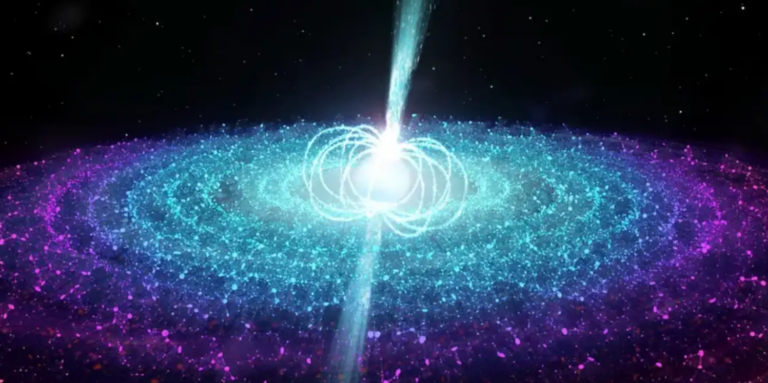Researchers enable detection of remarkable gravitational-wave signal
Scientists from the Institute of Cosmology and Gravitation (ICG) at the University of Portsmouth have helped discover a very distinct gravitational-wave signal that may hold the key to this mystery.
This discovery is one of the new announcements of the LIGO-Virgo-KAGRA collaboration that has over 1600 scientists, including scholars from the ICG. Their job is to capture gravitational waves and then use them to study various aspects of science.
In the fourth LIGO-Virgo-KAGRA observing run in May 2023, a gravitational-wave signal is observed by the LIGO Livingston detector in Louisiana, U. S. , which is due to the merger of a neutron star and a compact object. 5 to 4. Five times the mass of our sun.
Neutron stars and black holes are both compact objects, which are constituted as a result of massive stellar explosions. About this signal, known as GW230529, it is critical to look at the mass of the more massive object. This places it in a range of possible mass that may be intermediate between the most massive neutron stars and the least heavy black holes. However, the signal in the form of gravitational waves indicates that this object cannot be conclusively determined. Further observations of such phenomena in the future, especially together with signals in the electromagnetic spectrum, might help shed light on this matter.
Dr. Jess McIver from the University of British Columbia and the LIGO Scientific Collaboration reveals enthusiasm about this discovery and states that it is one of the astonishing events the collaboration has found during the fourth observing run of LIGO-Virgo-KAGRA. It indicates a higher rate of similar accidents with neutron stars and low mass black holes than expected.
The credibility of this event further diminishes when establishing its genuine nature as the signal was detected by a single gravitational-wave instrument.
A brilliant Research Software Engineer at the ICG, Dr. Gareth Cabourn Davies, has developed the tools used to analyze events involving a single detector. He then highlighted the importance of employing multiple detectors by detecting events in all of them because it is one of the most effective ways of separating signal from noise. In the event there is no other detector that can back up our findings, it is possible to assess an event with the help of suitable models of the background noise.

Before the detection of gravitational waves in 2015, masses of stellar massive black holes were estimated through X-ray observations and those of neutron stars through radio observations. These measurements divided into two groups with a gap between them, reaching approximately two to five times the mass of the sun. Occasionally, a few measurements have come close to this mass-gap and this has attracted a lot of controversy among astrophysicists.
From the analysis of the signal GW230529 it was concluded that it resulted from two compact objects that merged. One of these objects had a mass ranging from 1. 2 to 2. The first was 0 times that of our sun, the second was slightly more than two times the mass of our sun.
While the provided GW signal is not sufficient to determine whether these compact objects are neutron stars or black holes, it can be assumed that the lighter object is a neutron star, and the heavier object is a black hole. The researchers of LIGO-Virgo-KAGRA Collaboration are sure that the heavier object lies within the mass gap.
From GW observations alone, we have nearly 200 measurements of compact-object masses. Among these, only one other merger event has been identified, called GW190814, which likely involved a compact object within the mass gap. This took place when a black hole conjoined with a compact object more massive than the heaviest neutron stars currently known.
Dr. Sylvia Biscoveanu from Northwestern University also shows interest in this particular system and calls it the first gravitational-wave observation of a mass-gap object with a neutron star. She stresses that this observation poses important consequences for binary evolutionary models and electromagnetic counterparts of compact-object mergers.
An overview has been released together with a working paper that outlines the results of the fourth observing run. This run started on January 16, 2024 and had to cease for maintenance and enhancements before continuing on April 10, 2024. Overall, 81 potential signal candidates were found, and after a thorough analysis, GW230529 became the first published.
The fourth observing run is planned to continue until February 2025 and involve all three detectors – LIGO Hanford, LIGO Livingston, and Virgo. There are no other breaks in observing planned for this time frame.
Throughout the run, LIGO-Virgo-KAGRA researchers are still working on the data collected in the first half of the run, and there are still 80 significant signal candidates to consider. According to the current estimates, the total number of observed signals will exceed 200 by the end of the fourth observing run in February 2025.
Reference: Paper: Observation of Gravitational Waves from the Coalescence of a 2.5-4.5 M⊙ Compact Object and a Neutron Star
Research summary: GW230529: Observation of the merger of a neutron star and an unknown compact object
Do not forget to share your opinion with us to provide you with the best posts !




0 Comments